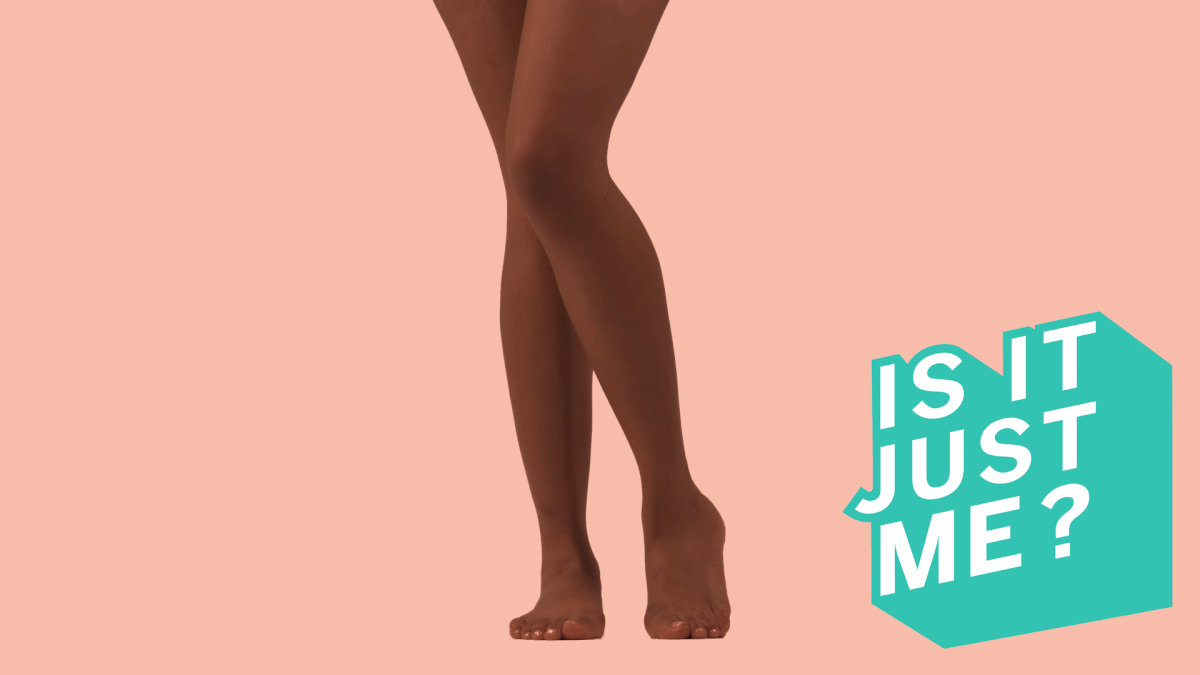You’ve definitely seen it before: A little kid on the street, looking increasingly impatient, slowly starts jiggling up and down, then side-to-side. It could just be a cute little dance, but then she squeezes her legs together and her movements become more frantic. It’s the pee dance and someone needs to take her to the bathroom, STAT.
But let's be real: The pee dance isn't reserved for children alone—there are times when it hits us as adults, too. Maybe when you've had a few beers and the bathroom line at the bar is five people deep. Or when you’re on a road trip, the next bathroom isn’t for 20 miles, and you’re suddenly regretting that Big Gulp.
Whatever the initial cause, when the urge to pee gets too intense in these moments, we resort to the child-like pee dance—it’s instinct. But it doesn't make much sense when you really think about it. When we have to pee so badly we can’t wait, how does sloshing all that liquid around help us feel better?
Unfortunately, there isn’t much hard scientific evidence to explain it, Howard Goldman, MD, a urologist at the Cleveland Clinic, tells Health. (Pee dancing isn't exactly the most pressing thing scientists can study). But, based on other research and on extensive knowledge of how the bladder works, he can make a few educated guesses.
RELATED: Is It Just Me, Or Do You Always Have to Pee, Like, the Minute You Get Home?
“Number one, when you're moving around and jiggling, you're causing some contraction of the pelvic floor,” he says. Your pelvic floor muscles are very important to bladder control. Think about it like this: Your bladder is essentially a reservoir. For hours, it simply acts as a container to collect the urine slowly trickling in. But when it gets full enough, the bladder starts sending messages to your brain that it’s time to go to the bathroom. All this time, sphincter muscles in the pelvic floor that surround the urethra are keeping your bladder from leaking all over the place. “When it's time to urinate, they open and relax to allow urine to pass by,” Dr. Goldman says.
So when you do a little pee dance, you cause those sphincter muscles to contract even more than they naturally do—that can make the feeling that you have to pee so badly a little less urgent.
Moving around a bit when you have to pee is also a method of distraction. "When people have overactive bladders and they're trying to extend the time periods between their urination, we have them do distracting activities—count backwards, things like that,” he says. The same idea applies to the pee dance. It distracts your brain, even momentarily, from the overwhelming thought of “I need to get to a toilet right now!”
RELATED: Is It Just Me or Does Everyone Get Horrible Gas Before Their Period?
It’s natural for people to do distracting movements like this in times of stress, Dr. Goldman says. And having to pee without access to a bathroom can certainly be stressful. “Partly, [the dance] is an adaptation,” he says. “You’re stressed, so you move around, and when you're moving around the pelvic floor muscles tighten a little bit and there's some distraction, which then helps calm the bladder down.”
On top of the dance is a “squeeze and grab” strategy you mainly see in kids. “You'll sometimes see little kids squeezing their legs, crossing their legs, and sometimes grabbing or squeezing near their crotch,” Dr. Goldman says. While most adults don't do that in public (unless it's a very slight crossing or squeezing of the legs), there's actually a biological reason behind that move, too. Both the penis and the clitoris have lots of nerve endings, Dr. Goldman says. And some research shows that when those nerves are stimulated, the sensors in the bladder are inhibited. “That makes a lot of sense, because the last thing you want when the penis or the clitoris is being stimulated is to have a bladder contraction,” he says.
This ability for those nerves to quiet the bladder is such a widely known reflex that some scientists are working on devices—as shown in this 2016 study in the journal Frontiers in Neuroscience looking at what's called dorsal genital nerve stimulation—that could stimulate the nerves at the right time to calm the bladders of people who struggle with urinary incontinence.
Ultimately, while it sounds completely counterintuitive (and kind of embarrassing) to send the urine in your bladder on a rollercoaster ride with a pee dance, doing a little jig and squeezing your thighs together really can help. Next time you’re unable to get to a bathroom, even a subtle crotch grab (if you can do it secretly) can do wonders to hold you over until you find a toilet.
To get our top stories delivered to your inbox, sign up for the Healthy Living newsletter
